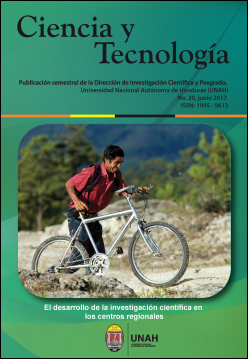Cattle fattening channel and tilapia with jicaro flour feed
DOI:
https://doi.org/10.5377/rct.v0i20.5497Keywords:
Ictaluruspunctatus, Tilapia, CrescentiaalataAbstract
In the southern region of Honduras it has been viewed aquaculture as an alternative for obtaining high quality protein for low-income rural population. In this area obtaining alternative low-cost local inputs and fast-growing aquaculture is key to ensuring the success of the processes that strengthen food security in the population. One option for achieving this goal is the use of channel catfish (Ictalurus punctatus) as specie of culture and flour Jícaro (Crescentia alata) as a basis for the development of low-cost food. In this study the growth of channel catfish and tilapia in fattening stage was evaluated obtaining a conversion factor of 3.56: 1 and 4.19: 1 respectively, with feed containing 25% crude protein and 70% of its composition flour-based Jícaro. The tilapia obtained an increase in daily weight 0.68 grams and 2.76 grams the catfish; the condition factor in the two species at the end of the experiment was appropriate.
Revista Ciencia y Tecnología No.20, junio 2017; 91-100
Downloads
1188
Downloads
Published
How to Cite
Issue
Section
License
© Revista Ciencia y Tecnología
Authors who publish in this journal accept the following conditions: In accordance with the legislation of copyright, Revista Ciencia y Tecnología, recognizes and respects the moral right of authors, as well as the ownership of the patrimonial right, which will be ceded to the magazine for its diffusion in open access in printed version and in digital format. By being part of multiple indexers, databases and reference systems, the articles published by Revista Ciencia y Tecnología will be visible and will be downloaded from these websites, indicating, in all cases, the authorship of the articles, the date of publication and the number of the journal to which they correspond.




